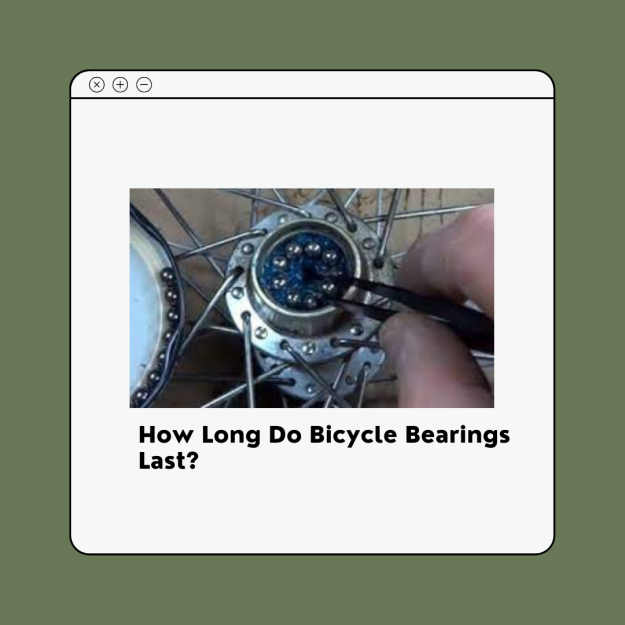I think You are searching that How Long Do Bicycle Bearings Last?
Well!
You’re on exact site because we already have worked for you. Bicycle bearings are one of the most important parts of a bicycle.
They’re used to prevent friction and reduce noise. In order to make a good impression, you want to make sure that your bearings last as long as possible.
But how long do they last? Let’s take a look at the different types of bicycle bearings and how long they last.
The History of Bicycle Bearings
There is a great history behind bicycle bearings. They were developed by Charles Taylor in 1874. He was a British engineer who worked on developing the first bicycle with a chain drive.
Why does Bicycle Bearings Fail?
Bicycle bearings fail because of the friction between the bearings and the shaft. As the bicycle turns, the bearings spin, causing friction that generates heat. Heat causes the bearing to wear down and eventually fail.
How to Replace Bicycle Bearings?
Bicycle bearings are commonly found in bicycles, and they are used to connect the spindle to the wheel hub.
Bicycle bearings can wear out over time, and if they are not replaced, the bicycle can start to shake, wobble, or even fall apart.
The Maintenance of Bicycle Bearings
Bicycles have bearings on their wheels which help keep them in place. These bearings are also what cause the squeaking noise when you ride. If you want to avoid this noise, you should always check the bearings before riding.
How to Choose the Right Bicycle Bearing?
Choosing the right bicycle bearing is an important part of maintaining your bike. You’ll want to know how to choose the right one.
A good way to choose a bicycle bearing is to look at the size of the bike you’re riding. If you have a large frame, then you’ll want to go with a larger bearing.
On the other hand, if you have a smaller frame, then you’ll want to go with a smaller bearing.
A good way to measure your frame size is to measure the distance from the center of the seat post to the center of the bottom bracket.
To get the correct bearing, you’ll need to measure the distance from the center of the seat post to the center of the bottom bracket.
Once you’ve measured, you’ll need to multiply that number by the diameter of the wheel.
For example, if the measurement is 16 inches, and the wheel is 32 inches in diameter, then you’ll want to use a 40-millimeter (1.57 inch) bearing.
How to Care for Bicycle Bearings?
You can buy a new set of bearings or you can replace the old ones with new ones. If you replace them, you will need to remove the old bearings first.
Once you have removed the old bearings, you can use a bearing puller to get the old bearings out. You may also need to replace the races with new ones.
How to Troubleshoot a Bicycle Bearing?
A bicycle bearing is a small, inner-tire component that holds a bicycle wheel in place.
It consists of a cup-shaped metal sleeve, an outer ring, and a pair of ball bearings. When a bicycle tire rolls over the bearings, they allow the wheel to rotate smoothly.
The bearings are usually made of brass or steel. Brass bearings tend to be more durable and last longer than steel.
They are also lighter, so they require less energy to propel a bicycle. But brass bearings can rust if not properly cared for.
If you notice any unusual sounds or feel any vibrations when riding your bike, check the bearings. They may need to be replaced.
Conclusion – How Long Do Bicycle Bearings Last?
The more you ride, the more your bearings will wear down. This is because the friction of the ball bearings wears down the races that the balls roll in.
The race, in turn, wears down the bearing. So, if you want to know how long your bearings will last, you need to consider the number of miles you ride.


